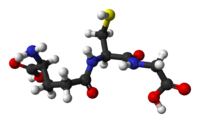
Use of a purified β-glucosidase from microorganisms associated coral to enhance wine aroma.
Sign Up to like & getrecommendations! Published in 2021 at "Journal of the science of food and agriculture"
DOI: 10.1002/jsfa.11694
Abstract: BACKGROUND Beta-Glucosidases (3.2.1.21) play essential roles in the removal of nonreducing terminal glucosyl residues from saccharides and glycosides. However, the full potential and different applications of recombinant high-yield microbial β-glucosidase-producing systems remain to be tackled.… read more here.
Keywords: use purified; purified glucosidase; wine; glucosidase microorganisms ... See more keywords

Developing novel oenological tannins from 44 plants sources by assessing astringency and color in model wine.
Sign Up to like & getrecommendations! Published in 2022 at "Journal of the science of food and agriculture"
DOI: 10.1002/jsfa.12247
Abstract: BACKGROUND Oenological tannins are commercial natural products extracted from different botanical sources, which were widely reported as prominent contributors to wine quality. Research on wine quality affected by tannins extracts promoted the development of new… read more here.
Keywords: color model; astringency color; astringency; wine ... See more keywords

Insights into the stable isotope ratio variability of hybrid grape variabilities: a preliminary study.
Sign Up to like & getrecommendations! Published in 2022 at "Journal of the science of food and agriculture"
DOI: 10.1002/jsfa.12316
Abstract: BACKGROUND Official stable isotope databases, based on the analysis of (D/H)I ethanol , (D/H)II ethanol , δ13 Cethanol and δ18 Owater of wine, are today an indispensable tool for establishing the limits beyond which the… read more here.
Keywords: stable isotope; wine; isotope ratio; isotope ... See more keywords

Occurrence and impact of carbendazim and hymexazol residues on yeast and ochratoxin A contamination during wine production.
Sign Up to like & getrecommendations! Published in 2023 at "Journal of the science of food and agriculture"
DOI: 10.1002/jsfa.12699
Abstract: BACKGROUND Grapes are vulnerable to carbon black aspergilli, which can produce the mycotoxin, Ochratoxin A (OTA). Carbendazim and hymexazol, are widely applied to control grape diseases. Fungicides, toxigenic fungus and OTA can be transferred from… read more here.
Keywords: contamination; carbendazim hymexazol; ota; hymexazol ... See more keywords

Characterization of major properties and aroma profile of kiwi wine co-cultured by Saccharomyces yeast (S. cerevisiae, S. bayanus, S. uvarum) and T. delbrueckii
Sign Up to like & getrecommendations! Published in 2020 at "European Food Research and Technology"
DOI: 10.1007/s00217-020-03439-6
Abstract: The effect of different yeast strains on the quality of kiwi wine was investigated by polyphase determine approaches in the present research. The influence of co-culture and inoculation sequence on the quality was also explored… read more here.
Keywords: delbrueckii; wine; major properties; kiwi wine ... See more keywords

Characterization of natural Oenococcus oeni strains for Montepulciano d’Abruzzo organic wine production
Sign Up to like & getrecommendations! Published in 2020 at "European Food Research and Technology"
DOI: 10.1007/s00217-020-03466-3
Abstract: Montepulciano d'Abruzzo is a red wine grape variety of Vitis vinifera L., grown in Central Italy. It is mainly identified with Abruzzo region, where it currently accounts for around 50% of the regional vineyard. Malolactic… read more here.
Keywords: organic wine; wine; abruzzo organic; oenococcus oeni ... See more keywords

A multi-phase approach to select new wine yeast strains with enhanced fermentative fitness and glutathione production
Sign Up to like & getrecommendations! Published in 2018 at "Applied Microbiology and Biotechnology"
DOI: 10.1007/s00253-018-8773-3
Abstract: The genetic improvement of winemaking yeasts is a virtually infinite process, as the design of new strains must always cope with varied and ever-evolving production contexts. Good wine yeasts must feature both good primary traits,… read more here.
Keywords: production; wine; glutathione production; fermentative fitness ... See more keywords

Exploring the diversity of bacteriophage specific to Oenococcus oeni and Lactobacillus spp and their role in wine production.
Sign Up to like & getrecommendations! Published in 2021 at "Applied microbiology and biotechnology"
DOI: 10.1007/s00253-021-11509-2
Abstract: The widespread existence of bacteriophage has been of great interest to the biological research community and ongoing investigations continue to explore their diversity and role. They have also attracted attention and in-depth research in connection… read more here.
Keywords: diversity; wine; bacteriophage; oenococcus oeni ... See more keywords

Pulsed electric field (PEF) technology for microbial inactivation in low-alcohol red wine
Sign Up to like & getrecommendations! Published in 2018 at "Food Science and Biotechnology"
DOI: 10.1007/s10068-018-0422-1
Abstract: The decontamination of spoilage-related microbes in low-alcohol red wine was performed using a serial multiple electrode pulsed electric field (PEF) treatment system. The system consisted of seven electrodes connected in series, and it has been… read more here.
Keywords: pef; field; low alcohol; wine ... See more keywords

Geochemical fingerprints of “Prosecco” wine based on major and trace elements
Sign Up to like & getrecommendations! Published in 2017 at "Environmental Geochemistry and Health"
DOI: 10.1007/s10653-017-0029-0
Abstract: The terroir can be defined as interactive ecosystem that includes climate, geology, soil and grapevine, and it is used to explain the hierarchy of high quality of wine. In order to understand the terroir functions,… read more here.
Keywords: wine; geology; geochemistry; major trace ... See more keywords

Liquid chromatographic methods coupled to chemometrics: a short review to present the key workflow for the investigation of wine phenolic composition as it is affected by environmental factors
Sign Up to like & getrecommendations! Published in 2020 at "Environmental Science and Pollution Research"
DOI: 10.1007/s11356-020-09681-5
Abstract: The guarantee of wine authenticity arises great concern because of its nutritional and economic importance. Phenolic fingerprints have been used as a source of chemical information for various authentication issues, including botanical and geographical origin,… read more here.
Keywords: environmental factors; wine; chromatographic methods; investigation ... See more keywords